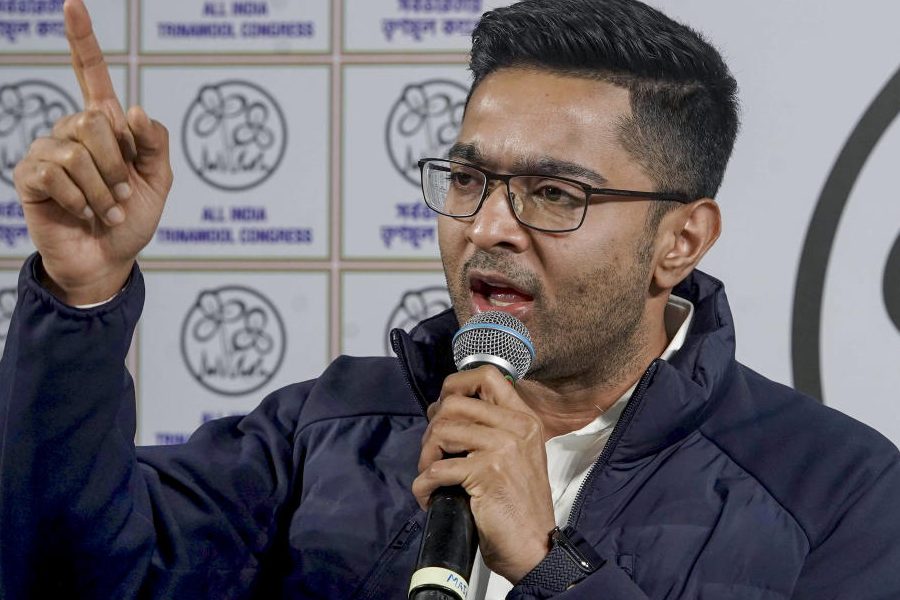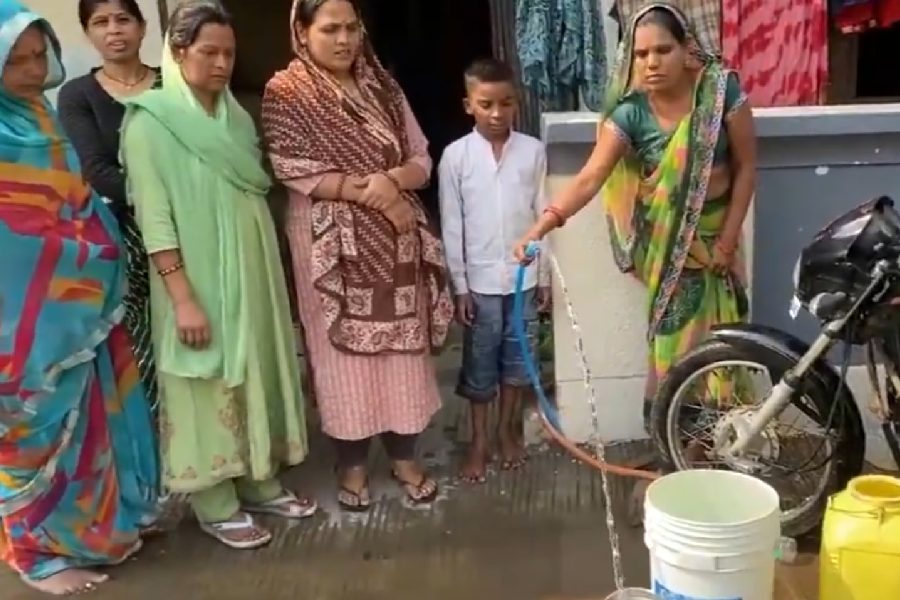 |  |
| Sumit Singh, who won the CAB Challenge Trophy as the best district cricketer in the U-14 category with his mother, Sharmila who does tailoring jobs to meet Singh’s cricketing expenses and (right) Sheikh Akhtar Ali with his father Sheikh Mehtab Ali, who pulls a rickshaw for a living. (Gopal Senapati) | |
Cricket has truly transcended the barriers of class in Howrah as a crop of young talent from economically backward classes prove their mettle with the willow and the cherry in the sub-junior championships in the state. Its a common sight to find young boys wielding a piece of wood to hit an old rubber ball over the broken tiles of the teeming slums of Howrah. This zeal for the game has turned the district into a breeding ground of promising cricketers, who are winning the U-14 and U-16 tournaments in recent times.
 |
Howrah, which was champion of the inter-district U-16 tournament last year, beat Burdwan by 47 runs to win the Cricket Association of Bengal’s (CAB) U-14 inter-district tournament this year. Howrah’s young teens have also been wearing the top crowns in the sport. While Puran Chand Singh Yadav won the best district cricketer crown in 2010, it was Md Irfan, who was adjudged the best district cricketer in the U-14 category and also captained the Bengal U-16 team in 2012. Akash Kumar Singh joined the league by being the highest wicket taker last year.
Joining the Yadavs, Singhs and Irfans this year are Sumit Singh, who won the CAB Challenge trophy as the best district cricketer in U-14 and Sheikh Akhtar Ali, who was awarded the B P Himatsinka Trophy as the highest wicket-taker in the Ambar Roy Sub-junior Cricket Tournament. He also won the Dr MM Bose Memorial Challenge Trophy as the best sub-junior cricketer of the year. These young talents not just have common scintillating scoresheets to show off but also fight similar odds coming as they do from impoverished households that can ill afford to pay for their cricketing careers.
Fourteen year-old Sumit Singh’s haul of 137 runs and eight wickets from four matches helped Howrah win the tournament and him to be adjudged the best player. It was also an honour for Howrah Sammilani, the club where Sumit plays. What’s more is that Sumit is likely to be selected in the U-16 Bengal team. He has already been called for the trial matches.
Winning a big award at this stage of his life, Sumit can now hope for a better tomorrow. Living out of a seven feet by eight feet room at Rajani Kumar Sen Street, near Chintamoni Dey Road in Howrah Maidan, with his parents, elder brother and one sister, Sumit has felt the pains of poverty since childhood. His father works in a hosiery factory in Salt Lake while his mother does tailoring jobs to run the household. As a child Sumit and his elder brother would play cricket in front of their house with an old plastic ball and a piece of wood.
Both boys were noticed by Parthasarathi Ghosh, the technical director of Howrah Sammilani, who visits the neighbourhood everyday on his way to the club. “I called both the boys to the club to play cricket. While his elder brother, Amit, started playing soon, Sumit would never come for practice,” said Ghosh. “I was too lazy and did not like to practice every day,” said Sumit. Amit’s improvements in the field gradually convinced Sumit to join the club. “I noticed that the boy had very good wrist work and could spin the ball very well,” said Ghosh, who feels that Sumit is one of the best leg-spinners in Bengal.
Although both brothers started playing cricket, it was difficult for father Ranjit Singh to run the family expenses and his sons’ cricket expenses together. “My husband’s earnings are not enough to run a family of five. It would not have been possible to run the additional costs of the cricket expenses if I had not pitched in,” said Sharmila Devi, Sumit’s mother. Sharmila mends old clothes and also does stitching jobs for her neighbours. She manages to earn Rs 2,500 to 3,000 a month to meet her sons’ expenses. “We also get a lot of help from the club which buys the gear and other necessary things. I try to provide healthy food as much as possible to the boys since they have to practice so much,” said their mother.
“I had spoken to Sumit’s parents after he started playing regularly and winning man of the match titles in club tournaments. I told them that it was necessary for the boys to get good food,” said Ghosh, who helped by buying jersey, pads and bats for the boys.
Sumit’s day starts from five in the morning when he goes for practice to Howrah Sammilani at Howrah Maidan. He practices till it is time to go to school. In the afternoon, he goes to Dumurjala Stadium for practice again. A student of Class VIII at Howrah Siksha Sadan, Sumit hates studies but likes to watch cricket on TV. “I watch everything from test matches to one-dayers and T20. My idol is Shane Warne and I want to be like him,” said Sumit.
 |
Fifteen-year-old Sheikh Akhtar Ali actually lives in a slum on Bellilious Road with his parents, two brothers and three sisters. Akhtar is the youngest among the three brothers. Living in abject poverty in a room that is hardly more than 200 square feet, in the by-lanes of Bellilious Road, Akhtar had never imagined he would play cricket. The son of a rickshaw-puller, Akhtar’s father can hardly make both ends meet. His mother works as a domestic help. It was again Parthasarathi Ghosh’s keen eyes that spotted Akhtar. “I watched him play and brought him to the club,” said Ghosh. Akhtar’s father, Sheikh Mehtab Ali, always supported his son, hoping that he will be a Shoaib Akhtar some day. However, Ghosh felt otherwise. “Akhtar’s physique is not cut out for pace bowling. Instead, he could be a better spinner,” he said. After joining Howrah Sammilani, for a long time Akhtar would never bat during practice. He was always a bowler. “I had forgotten to get him a bat and he did not ask me for one,” said Ghosh.











